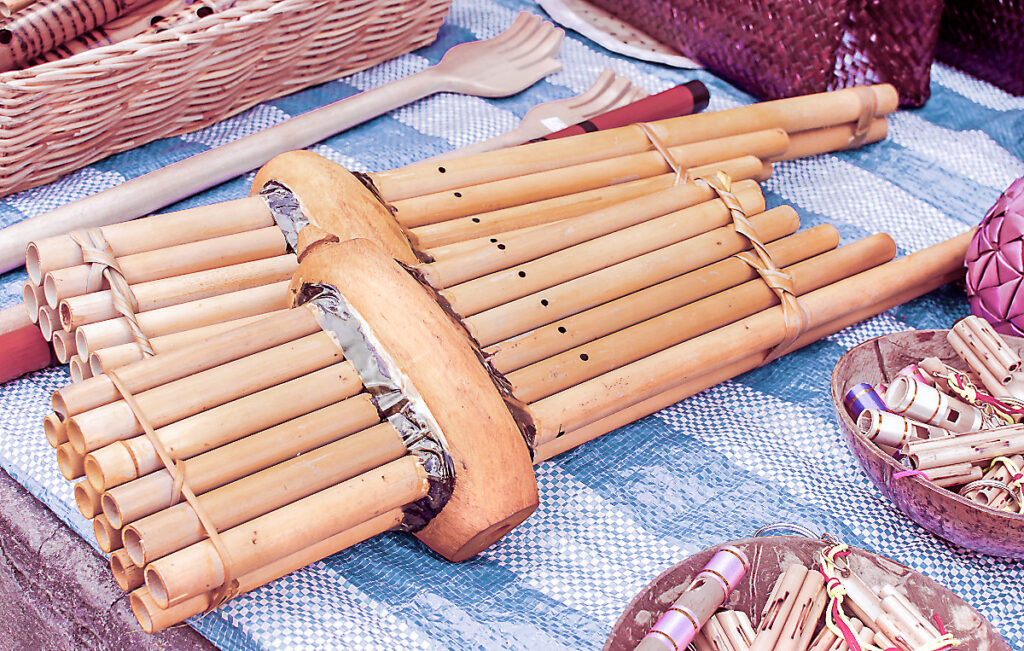The khene (a.k.a. khaen; in Thai: แคน), a long bamboo reed instrument, is the most beloved musical instrument in Laos as well as neighboring Thailand. It is the Lao instrument most familiar to the rest of the world. Often a common part of daily life, in some families as indispensable as chairs and tables, the khene is revered worldwide for its highly unique buzzing sound.
The origins of the khene are not known exactly. The usual tale is that a woman created the instrument (after several designs that didn’t work) to imitate a particular bird’s song. Pleased with the instrument, she took it to the leader of her area in an effort to popularize it. The leader loved the sound, and since it was as yet unnamed, he suggested she call it khene (“better”) because it sounded better than the other instruments he’d heard.
See also: A Fine Jade Bracelet: Art or Jewelry?
Bamboo tubes are bunched together to create the khene, and the instrument utilizes a free reed, which vibrates when air is blown past it. (Accordions and harmonicas operate on the same principle.) The most common khene has 16 tubes of varying lengths, each with a brass reed inside. Older versions had 18 tubes and were much longer.
The size of the instrument varies, from 61 cm, or 2 feet, up to 250 cm, or 8+ feet. It has a droning, commanding presence, and is capable of rather interesting, generally vibrant music. It is most popular in rural areas of Laos.
The khene is played in different types of settings: solo, with other instruments, or as part of a khene ensemble. It is most often used for singers performing Lao folk music, and for background music in theater.
See also: Ancient Roman coins: History you can hold in your hand
Interestingly, the khene is an instrument of the Lao people, meaning that it is popular both in Laos itself, as well as the large Lao population in northern Thailand’s Issan region.










